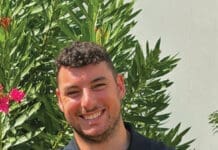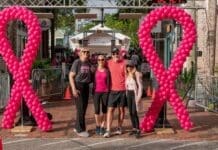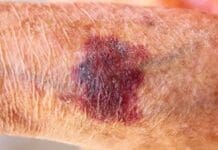
The Choctawhatchee Bay watershed encompasses over 5,400 square miles of land mass that drains into the watershed. It crosses two states and includes portions of six counties in Florida and eight counties in Alabama. It is known as a home to many threatened and endangered species including the Gulf Sturgeon. It is a retreat for both our locals and tourists to the area that enjoy these natural resources. Many people enjoy water recreation throughout the watershed including boating, kayaking, canoeing, fishing, and other activities.
As we enjoy our natural ecosystems, it is good to understand our surroundings that live within nature. A topic that is brought up frequently during this time of year is “Are our waters safe?” Florida has a diverse water quality monitoring network for many waterbodies in Florida. The Florida Department of Health samples and reports water quality data for the Public Health Beaches Program. The Florida Department of Environmental Protection helps sample, report, and develop water quality standards for the state waterbodies. Many other local governments, including Walton County, and advocacy groups aid in data collection and reporting.
The Public should be aware of naturally occurring bacteria in our waterbodies, including Vibrio species.
What is Vibrio bacteria?
Vibrio bacteria is a family of marine bacteria that naturally occurs in coastal waters worldwide. They are NOT a result of pollution and can be present in clean-looking water. Many species of Vibrio are actually beneficial to the ecosystems as they help break down organic matter. The species that infect humans, such as Vibrio vulnificus and Vibrio parahaemolyticus, are most common in brackish environments where freshwater mixes with salt water like estuaries and bays rather than the beach or ocean because these bacteria do not have the ability to tolerate high salt levels. They are found year-round but are most abundant from April to November when water temperatures are the warmest.
Who is at risk for infection by Vibrio?
According to the CDC, most people are not at risk for developing illness from Vibrio vulnificus, however, people with weakened immune systems and/or open wounds are suspectable. For infection to result, pathogenic Vibrio strains must enter the body of a susceptible individual usually when consuming raw and contaminated seafood, or prolonged exposure of an open wound in water containing Vibrio bacteria. The severity of the disease depends on the type and number of bacteria encountered, as well the individual’s health.
The Florida Department of Health of Walton County reported only one (1) Vibrio vulnificus case in Walton County over the last five years (2019-2024).
It is always good to be mindful of your surroundings when experiencing nature. Some helpful tips from the Florida Department of Health include:
- Thoroughly cook oysters and other shellfish, either by frying, stewing, or roasting to eliminate harmful bacteria and viruses in the meat.
- Avoid exposing open wounds, cuts, or scratches to seawater or estuarine water.
- Immediately clean wounds or cuts with soap and clean water.
- Monitor wounds and cuts for infection and seek immediate medical care if you develop symptoms such as redness, swelling, oozing, or other signs of infection like fever, increased pain, shortness of breath, fast or high heart rate, or disorientation.
Sources:
University of Florida IFAS Extension: https://edis.ifas.ufl.edu/publication/SG140
Florida Department of Health of Walton County
Helpful Resources and Links:
Florida Health Department: www.floridahealth.gov/diseases-and-conditions/vibrio-infections/vibrio-vulnificus
FloridaCHARTS.com
U.S. Centers for Disease Control and Prevention: http://www.cdc.gov/nationalsurveillance/cholera-vibrio-surveillance.html
Harbor Branch Oceanographic At FAU Vibrio Research and Safety Tips: https://www.fau.edu/hboi/research/ocean-health-human-health/microbiology/vibrio
FOR MORE INFORMATION ON SEAFOOD
https://www.fda.gov/Food/ResourcesForYou/HealthEducators/default.htm
Florida Department of Agriculture and Consumer Services: https://www.fdacs.gov/Agriculture-Industry/Aquaculture/Shellfish
FISHING SAFETY
http://myfwc.com/fishing/saltwater/recreational/fish-handling/
SOCIAL MEDIA ACCOUNTS
Florida Department of Health on Twitter — @HealthyFla and Facebook — https://www.facebook.com/FLDepartmentofHealth
Florida Sea Grant on Twitter — @FloridaSeaGrant and Facebook — https://www.facebook.com/flseagrant

























































